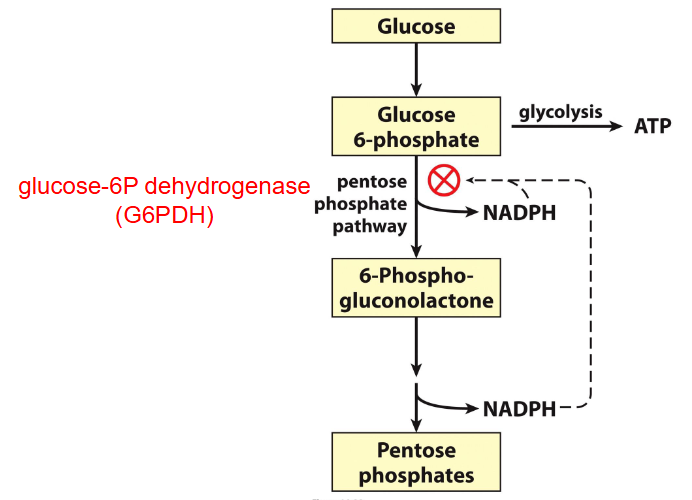IMED1003 - Anaerobic Metabolism and Pentose Phosphate Pathway (L14)
1/16
There's no tags or description
Looks like no tags are added yet.
Name | Mastery | Learn | Test | Matching | Spaced |
|---|
No study sessions yet.
17 Terms
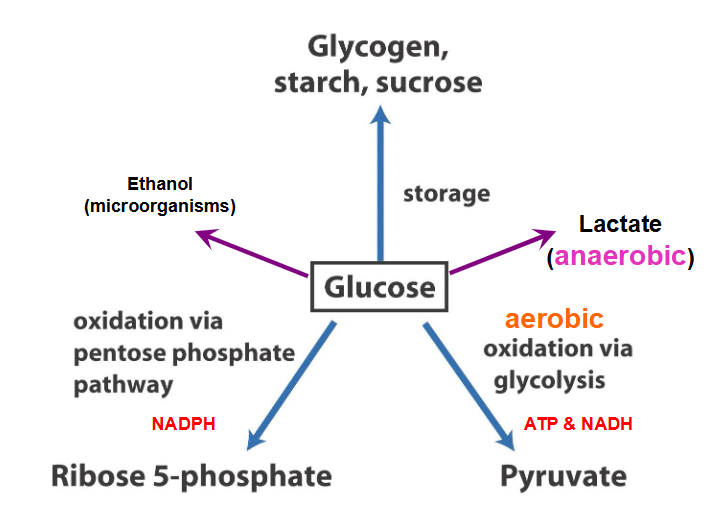
Glucose Summary
DIAGRAM ON SLIDE 3
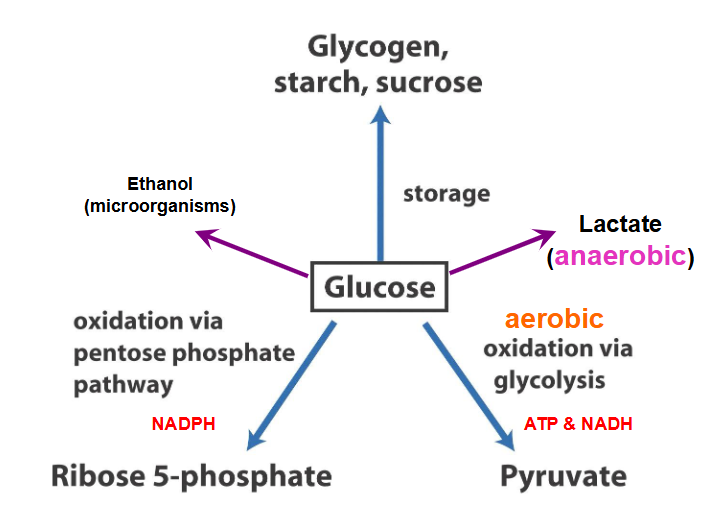
Anaerobic Metabolism
- in the absence of oxygen, fermentation occurs
- In absence of oxygen, NADH accumulates and inhibits pyruvate oxidation
- The pyruvate in turn accumulates and is converted to either lactate or ethanol
- Humans: pyruvate to lactate
- Yeast: pyruvate to ethanol
.
- NADH builds up because oxygen is the terminal electron acceptor in ETC. Remember that NADH, we're making a lot of NADH in glycolysis. Those electrons are carried by NADH to ETC. No oxygen means it can be donated to oxygen
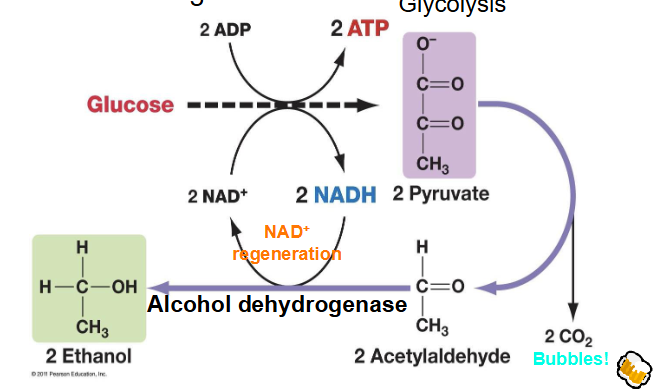
Fermentation of Yeast
- in yeast (and some plants), glucose is converted to ethanol in absence of oxygen
- this fermentation is used in beer and wine production, and bread baking
.
- the goal of the fermentation reaction is to reproduce NAD+
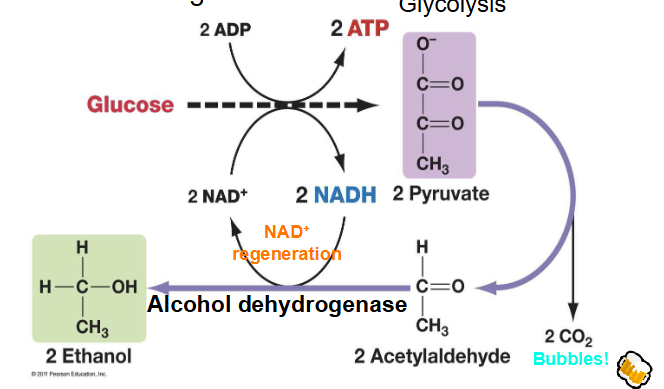
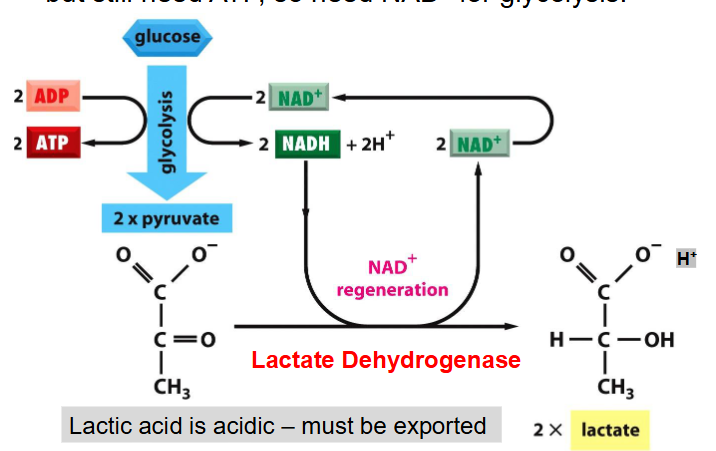
In absence of oxygen, can't undergo TCA cycle, but still need ATP
- hence we need NAD+ for glycolysis
.
- the goal is to reproduce NAD+ (thats the reason its carried out) (goal is to reoxidise NADH)
- lactate is the conjugate base of lactic acid - must be exported
- so if that lactic acid leaves the cell and accumulates in the blood, it lowers blood pH and causes lactic acidosis
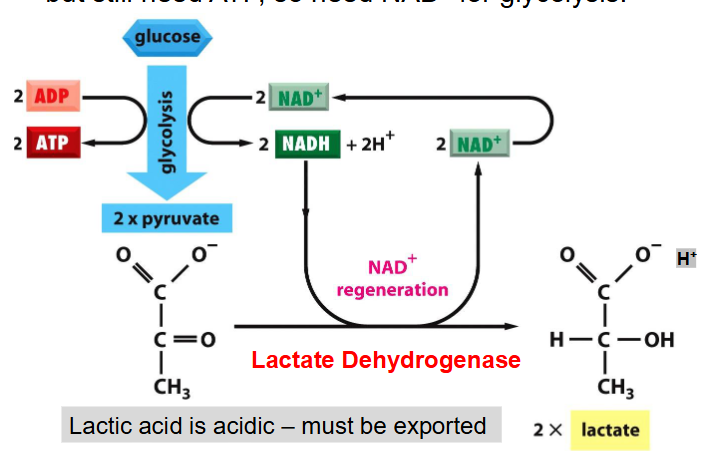
Anaerobic Glycolysis
- Objective is not to produce lactate, but to re-oxidise NADH -> NAD+, so can have continued ATP production from glycolysis
- Anaerobic metabolism -> only 2 ATP generated per molecule of glucose (as opposed to 38 ATP with complete oxidation in presence of O2)
- Relatively vast amounts of glucose can be broken down in anaerobic metabolism in very short time
Anaerobic Exercise
- during a sustained sprint, oxygen demand in muscle mitochondria exceeds capacity of blood to deliver it
- For a short time, stored energy (ATP and creatine-P) are used, but this is soon depleted
- Stored glucose and glycogen are burnt via glycolysis, forming lactate, yielding some ATP, but cannot be sustained
- The accumulated lactate must be metabolised (being acidic), which requires oxygen and leads to oxygen debt
- Aerobic training (lower intensity) increases the capacity of blood to carry oxygen. Causes increase in mitochondrial volume and ETC Components
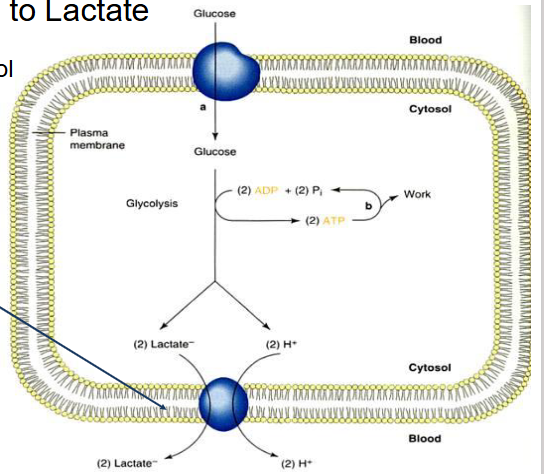
Pyruvate to Lactate
- occurs in cytosol
- Note: symport of lactate and H+ effectively means lactic acid is transported into blood
occurs by lactate dehydrogenase
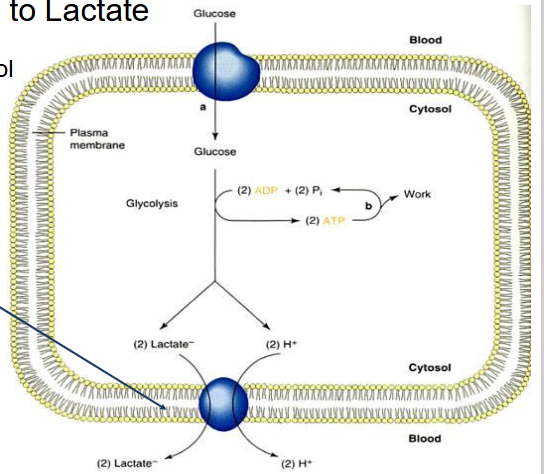
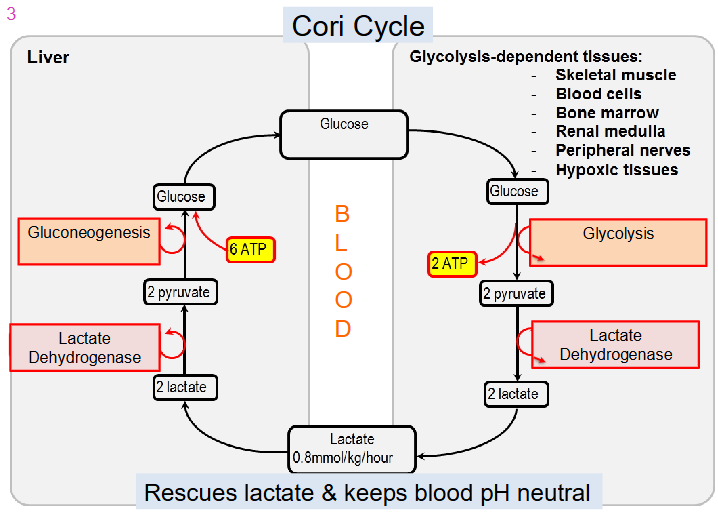
Cori Cycle
Glycolysis-dependent tissues:
- Skeletal muscle
- Blood cells
- Bone marrow
- Renal medulla
- Peripheral nerves
- Hypoxic Tissues
.
- rescues lactate and keeps blood pH neutral
- muscle exports lactate, liver imports it
- lactate dehydrogenase converts lactate into pyruvate
- gluconeogenesis (requires ATP), converts pyruvate into glucose
- glucose is transported from liver to glucose dependent tissue
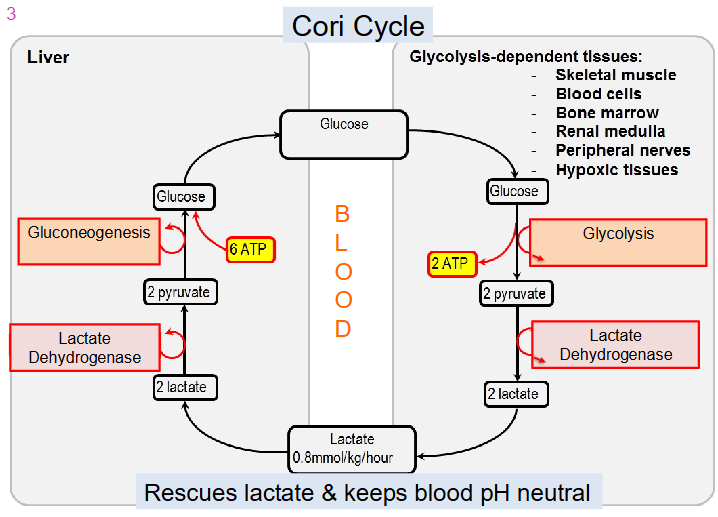
Clinical Implications
Hypoxia (not enough oxygen):
- Inhibition of ETC --> decrease ATP --> anaerobic glycolysis
- Glycogen depleted and lactate increased
.
Ischaemia and Myocardial Infarction (ACS) (restriction in blood supply, different to hypoxia)
- As above decreased blood flow --> decreased removal of metabolites (since we have restrictied blood flow) -> decreased energy production -> decreased ion pump function, --> increased intra osmotic pressure
- results in cell swelling and rupture
.
Lactic Acidosis:
- Lactate to CO2 + H2O, or lactate to glucose requires O2
- elevated blood lactate >5mM, decreased blood pH
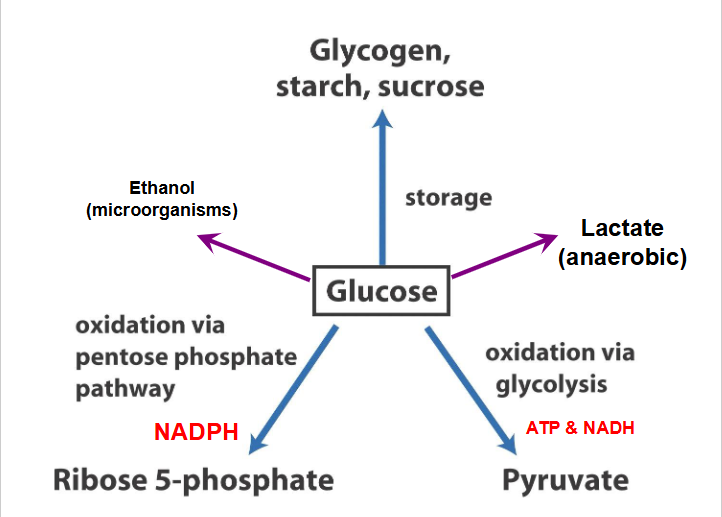
SUMMARY SO FAR
DIAGRAM ON SLIDE 12
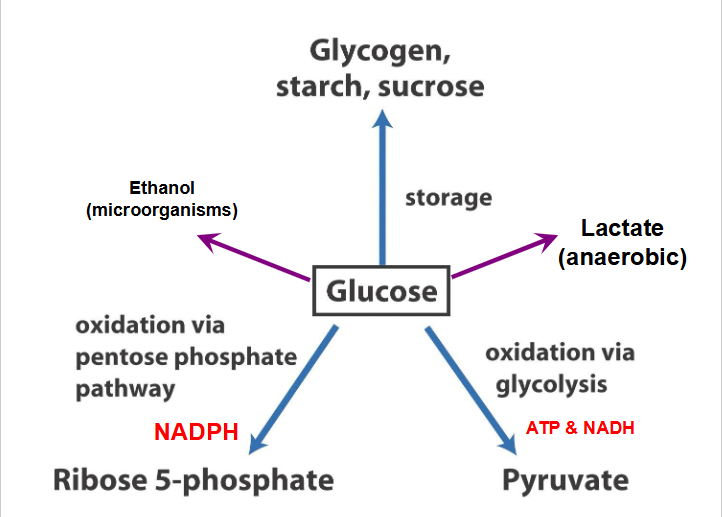
Pentose Phosphate Pathway
Versatile Pathway that does NOT make ATP, but does:
- produce ribose-5P for nucleotide synthesis
- supply NADPH for reductive biosynthesis
- provide pathway for metabolism of excess pentoses
.
- Has oxidative section - get ribose-5P and NADPH and non-oxidative section - manipulation of ribose-5P, depending on cell's needs
- if the cell needs amounts of ribose-5P and NADPH, oxidative PPP proceeds
- If the cell needs lots of NADPH, but not ribose-5P (e.g RBC), then nonoxidative PPP converts excess ribose-5P to glucose-6P to provide substrate for oxidative PPP, hence more NADPH is produced
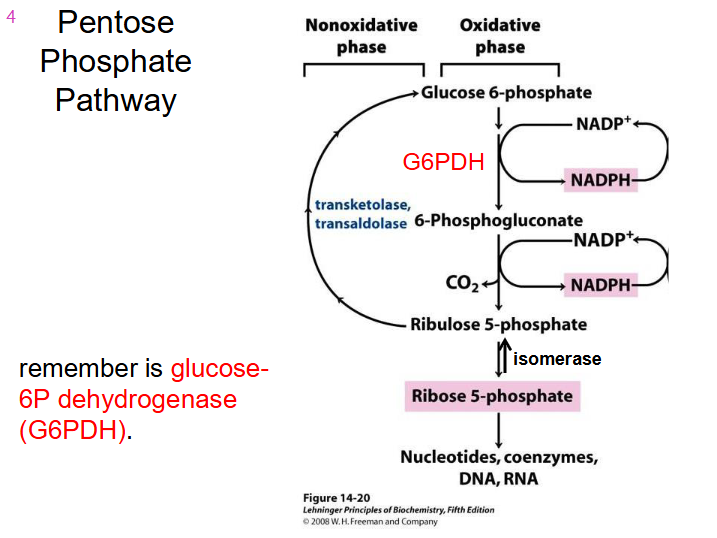
Pentose Phosphate Pathway Parts
- from intermediates of glycolysis
- reactions are complex - do not need to know details, only enzyme to remember is glucose-6P dehydrogenase (G6PDH)
- G6PDH is the rate limiting one
- enzyme activated by high levels of NADP+
- with high levels of NADP+, glucose is shuttled into PPP rather then glycolysis
- Glucose-6P is an intermediate in glycolysis
- high levels of NADP signals that we need to make more NADPH, so this metabolite feeds into the PPP to serve that requirement
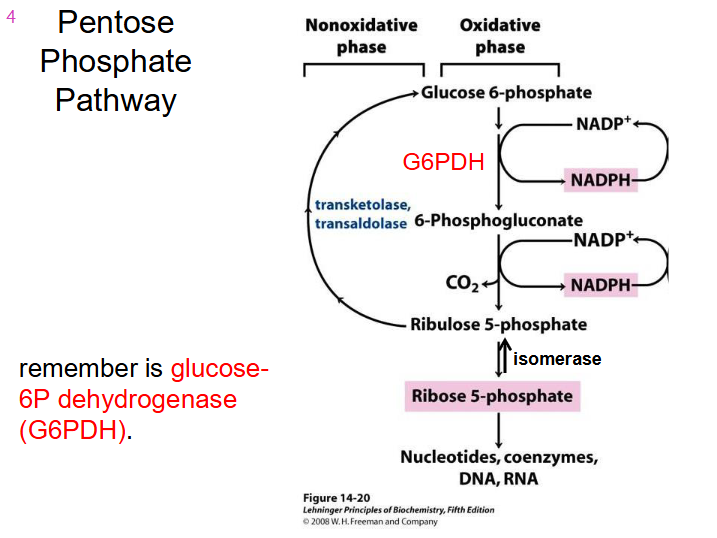
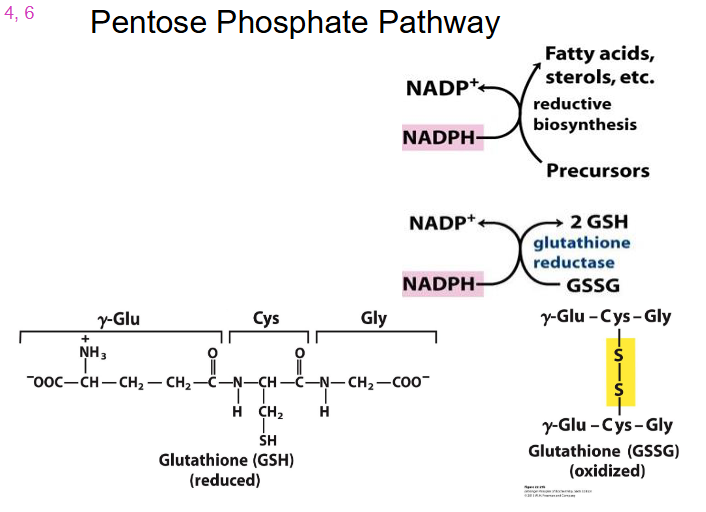
Pentose Phosphate Pathway Products
PRODUCES:
- NADPH = important biological reducing agent (e.g fatty acid biosynthesis)
- NADPH is used to maintain reduced glutathione (GSH), particularly important in RBC
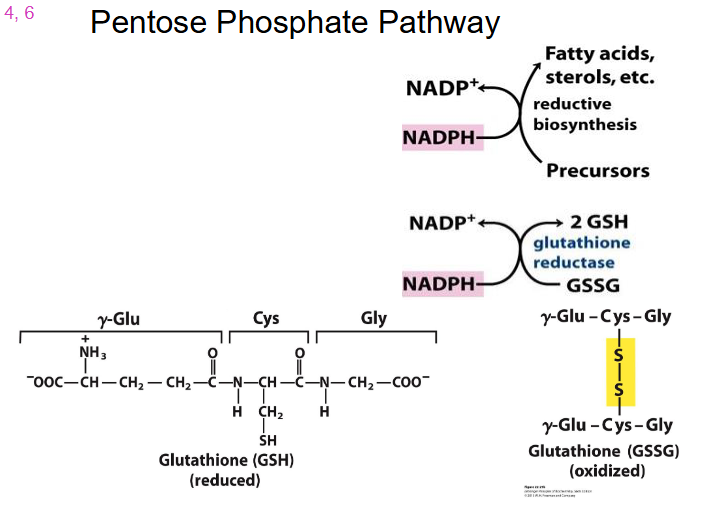
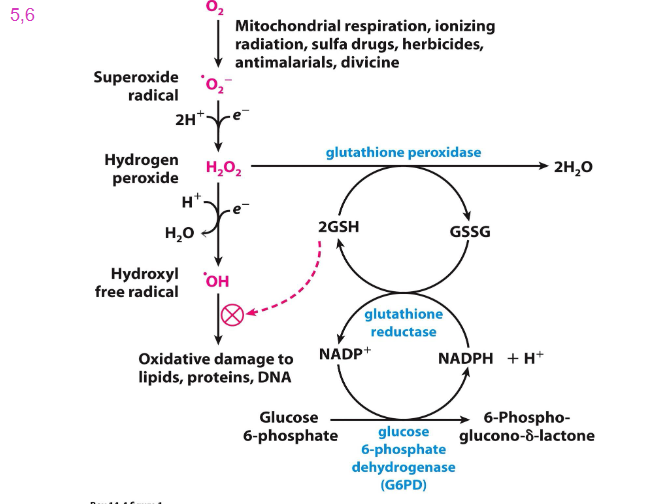
Role of Glutathione in cell
- if we have a situation of oxidative stress, we want a big pool of reduced glutathione to deal with that
- red blood cells are exposed to a lot of oxygen
- we want to make sure they are well equipped to deal with that oxygen in case we get some superoxide radicals being formed (reactive oxygen species)
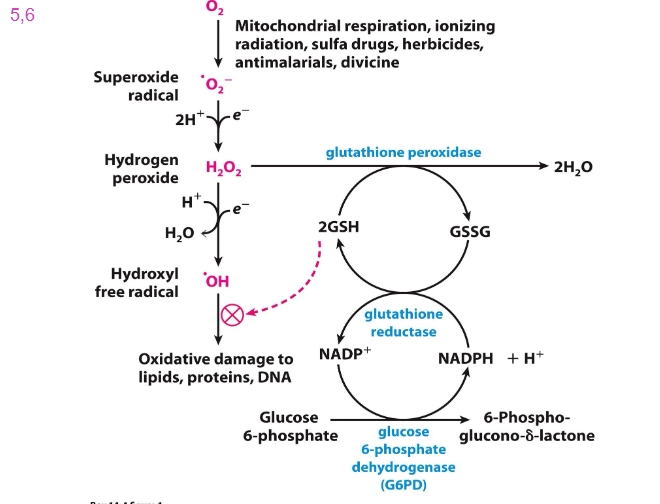
Clinical Perspective
- Glucose 6 Phosphate dehydrogenase (G6PDH) catalyses first step of Pentose Phosphate Pathway
- G6PDH deficiency leads to haemolytic anaemia
- hereditary and drug induced (anti-malarials, antipyretics, sulphur antibiotics)
- decreased G6PDH -> RBC membrane fragility -> haemolysis
Aerobic Metabolites can
cause damage to cells
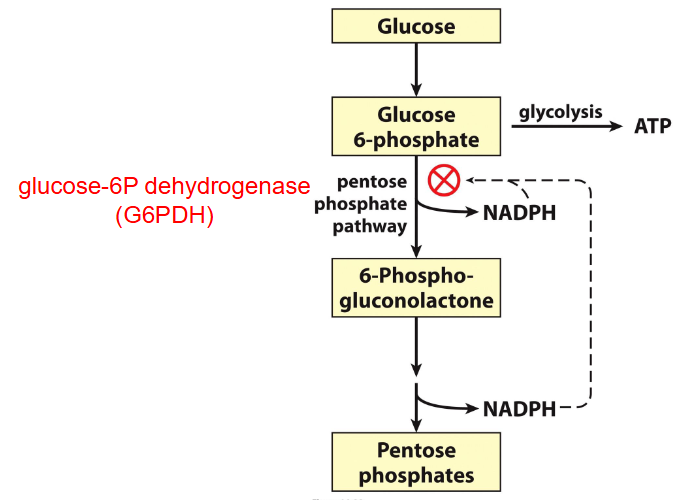
Pentose Phosphate Pathway OVERALL
DIAGRAM ON SLIDE 19
